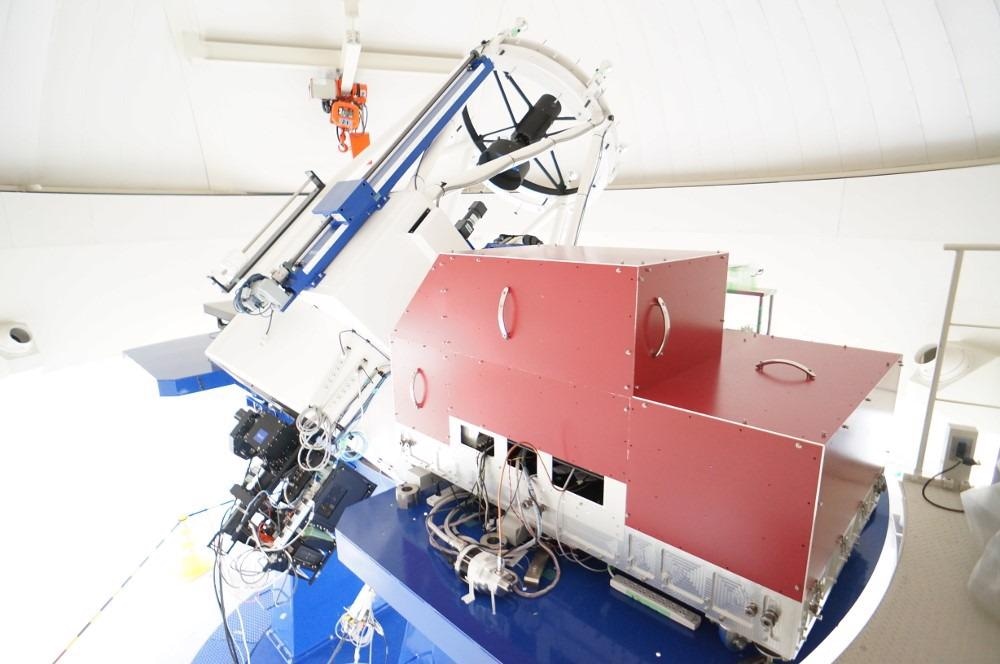Mar 1 2021
The lives of red supergiants, a class of star, end as supernova explosions. To date, there are no clear insights into their lifecycles, partially because of the difficulties in quantifying their temperatures.
 The WINERED spectrograph mounted on the Araki telescope. Image Credit: © 2021 Kyoto Sangyo University.
The WINERED spectrograph mounted on the Araki telescope. Image Credit: © 2021 Kyoto Sangyo University.
Astronomers have devised, for the first time, a precise technique to detect the surface temperatures of red supergiants.
Stars occur in an extensive range of sizes, compositions, and masses. The sun is regarded as a comparatively small specimen, specifically in comparison with something like Betelgeuse, known as a red supergiant.
The mass of red supergiants is more than nine times that of the sun, and such a huge mass implies that at the end of their life they die with extreme ferocity in a colossal explosion called a supernova, specifically the so-called Type-II supernova.
Type II supernovae supply the cosmos with elements essential for life; thus, scientists are eager to find more about them. Currently, no technique exists to precisely forecast supernova explosions. A part of this riddle lies in gaining insights into the nature of the red supergiants preceding the supernovae.
Although red supergiants are much more bright and visible at great distances, it is challenging to determine crucial properties related to them, such as their temperatures. This is because of the complex structures of their upper atmospheres that result in inconsistencies of temperature measurements that might hold good for stars of other types.
According to Daisuke Taniguchi, graduate student from the Department of Astronomy at the University of Tokyo, “In order to measure the temperature of red supergiants, we needed to find a visible, or spectral, property that was not affected by their complex upper atmospheres.”
Chemical signatures known as absorption lines were the ideal candidates, but there was no single line that revealed the temperature alone. However, by looking at the ratio of two different but related lines—those of iron—we found the ratio itself related to temperature. And it did so in a consistent and predictable way.
Daisuke Taniguchi, Graduate Student, Department of Astronomy, University of Tokyo
Taniguchi and his colleagues viewed candidate stars using an instrument known as WINERED, which can be fixed to telescopes to quantify the spectral properties of faraway objects. They quantified the iron absorption lines and estimated the ratios to predict the respective temperatures of the stars.
The researchers combined these temperatures with precise distance measurements acquired by the European Space Agency’s Gaia space observatory to calculated the luminosity, or power, of the stars. Their results were found to be consistent with the theory.
We still have much to learn about supernovae and related objects and phenomena, but I think this research will help astronomers fill in some of the blanks. The giant star Betelgeuse (on Orion’s shoulder) could go supernova in our lifetimes; in 2019 and 2020 it dimmed unexpectedly. It would be fascinating if we were able to predict if and when it might go supernova. I hope our new technique contributes to this endeavor and more.
Daisuke Taniguchi, Graduate Student, Department of Astronomy, University of Tokyo
Journal Reference:
Taniguchi, D., et al. (2020) Effective temperatures of red supergiants estimated from line-depth ratios of iron lines in the YJ bands, 0.97-1.32 μm. Monthly Notices of the Royal Astronomical Society. doi.org/10.1093/mnras/staa3855.